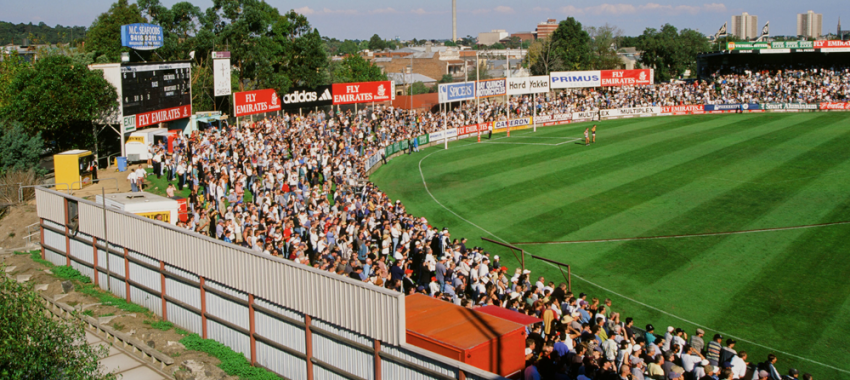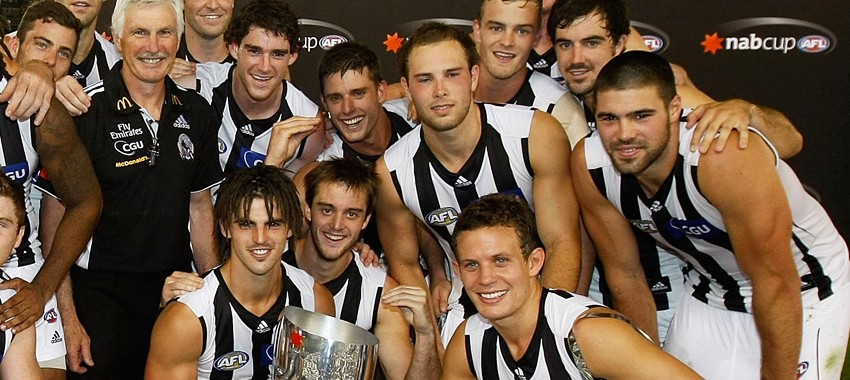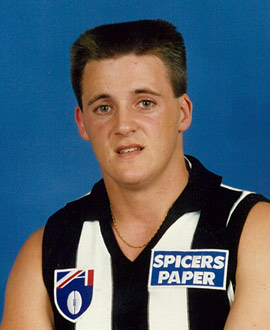By: Michael Roberts
As the 20th century drew to a close, Collingwood was forced to encounter some harsh realities. The 1990s that had started radiantly with the club’s first Premiership in 32 years had faded to gloom by the decade’s end. The club also had come to accept that its days of playing at Victoria Park were over.
It had been a long, drawn-out process. Victoria Park had been at the forefront of club grounds by the end of the 1960s, and remained that way through much of the 1970s. But the 1980s were a different matter, with the game as a whole struggling under the weight of increasing financial pressures and the club finding itself in a precarious financial position after the spending spree of the New Magpies.
The 1980s and 1990s had been full of promises, bold statements and innovations, as well as seemingly interminable negotiations with the Council, local interest groups and the VFL/AFL. But very little actually happened to improve the ground and its facilities, which were allowed to gradually diminish. Instead there was almost constant debate about the club's future at the ground, and a series of increasingly desperate measures to make that outcome financially viable.
Fitzroy shared the ground with the Magpies for two seasons, and a short-lived soccer club was formed too. There was even – most bizarrely – President Allan McAlister's grand plans for 'Maggieland', Collingwood's answer to Graceland, to be set within the streets adjoining Victoria Park. It was to include an indoor sports arena, a basketball centre, a theatre, a hotel, a new social club and even a restaurant chain. The club bought a number of properties around the ground, but eventually had to sell them all as the grand vision collapsed.
The club faced increasing pressure from the VFL, then the AFL, to move its bigger-drawing games to either the MCG or Waverley, as the League moved all of its Melbourne clubs away from the old suburban venues. There was also pressure from the local Council, with on-again, off-again agreements, and various interest groups. But the facilities were falling into disrepair, and the club was increasingly aware of the financial imperatives of playing big games away from Victoria Park. A 1994 move to play seven home games at the MCG was the thin end of the wedge.
By the late 1990s, even the ground's most ardent supporters had to concede it was no longer up to AFL standards. And the cost of upgrading would have been prohibitive. So it was no great surprise to see that, when the draw for the 1999 season was announced, the AFL had allocated two final matches for the ground steeped in 107 years of history.
Then AFL chief executive Wayne Jackson announced matches against interstate teams, West Coast, in April, and the Brisbane Lions, in August. Jackson said: “Victoria Park is the last of the suburban venues and while we respect, very much, its history and tradition as Collingwood’s home, the ground simply cannot accommodate all of the people who want to see the club play.” The club’s success as a drawing power had, in essence, meant it had outgrown its traditional home.
The penultimate match against West Coast was almost an achievement in itself. In the week leading up to the game, rain descended on Melbourne and drenched Victoria Park, causing the Eagles to request a shift of venue to the vacant MCG for the Sunday fixture. Somehow, against the odds, the Collingwood ground staff ensured the venue was in acceptable shape when game day came, and the match went ahead. Sadly, the result was such that many Collingwood fans wished it hadn’t. After a solid start, the young Magpies outfit was swept aside by the more experienced West Coast team, coached by Mick Malthouse. Within a year Malthouse would be the man charged with McGuire’s rebuilding campaign. But that April afternoon he oversaw the Eagles’ 36-point victory. Still, Magpie fans hoped they would get a more fitting farewell against the Lions.







